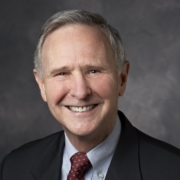Michelle Morais de Sa e Silva
The Global Diffusion of Conditional Cash Transfers
Today we look at conditional cash transfers as a global phenomenon of educational development. My guest is Michelle Morais de Sa e Silva.
Michelle has written a new book called Poverty Reduction, Education, and the Global Diffusion of Conditional Cash Transfers, which was published by Palgrave Macmillan. She finds that different political ideologies have been used to justify conditional cash transfers, helping them spread worldwide.
Michelle Morais de Sa e Silva is a Lecturer in International and Area Studies in the Department of International and Area Studies at the University of Oklahoma.
Citation: Morais de Sa e Silva, Michelle, interview with Will Brehm, FreshEd, 119, podcast audio, June 18, 2018. https://freshedpodcast.com/silva/
Will Brehm 1:05
Michelle Morais de Sa e Silva, welcome to FreshEd.
Michelle Morais de Sa e Silva 1:08
Thank you, Will. Thank you for having me in the program.
Will Brehm 1:11
Can you tell me what exactly are conditional cash transfers?
Michelle Morais de Sa e Silva 1:16
Yes, sure. So, conditional cash transfers are mostly and mainly poverty reduction programs. And they have attached conditions; those conditions are usually related to both education and health. Those are especially the kinds of conditional cash transfer programs that I have covered in the book. So, they combine poverty reduction strategies with education conditions, and some of them also health related conditions.
Will Brehm 1:43
OK, so conditional cash transfers – sometimes when I think of it, I think, “Is my salary a conditional cash transfer?” Because the condition is I go to work, and then I get a cash transfer, but it’s about poverty reduction. So, my wages wouldn’t be included in this.
Michelle Morais de Sa e Silva 2:00
Exactly, yes. So, these are programs that were mostly designed in the 1990s, as countries were having rising poverty levels and governance really wanted to do something about poverty reduction. And what they found was that a possibility was to directly transfer cash to poor families so that their incomes could increase in some sense; so that they could just go day by day and survive. But at the same time, it was a sort of monetary transfer directly from the government that had conditionalities, as we call them. And those conditionalities were related to children going to school, and also some of them having children go through a health checkups and having immunizations; so different kinds of activities that families had to perform in order to be able to reduce the payments from the government.
Will Brehm 2:53
OK, and so the another question I always think about with transferring of funds is, “Who’s doing the transferring, and who’s receiving the fund?” So, is it typically governments that are transferring money?
Michelle Morais de Sa e Silva 3:05
It is always government. In the book, I’m looking at over 70 conditional cash transfers that have been implemented since the mid-1990s in over 40 countries, and in all the cases covered in the book, these are conditional cash transfers implemented by governments. In very few cases, you would have funds coming from private foundations – which is the case of New York, for instance – but even in the case of New York, the implementation was done by a government agency.
Will Brehm 3:36
And I’d like to talk a little bit more about the conditions. So, you said it’s mainly in education and in health. So, with education, is it primarily about having children from poor families enrolling in schooling and simply attend? Or are there conditions on sort of the performance of those children in schools?
Michelle Morais de Sa e Silva 3:59
So, there are different models. The very first conditional cash transfers were mostly related to conditions in terms of enrollment and attendance. So, the idea back in the 1990s was to make sure that the children of poor families would be able to enroll in school and that their families would use that cash transfer to support some of the costs of schooling. Since then, some of the conditions have changed. So, some countries have minimum attendance requirements, and other programs and other countries, such as in the case of New York, have added the conditionality that children should perform at a certain level at standardized tests. The performance conditionality is, I would say, very specific to a few cases. New York was one of the first to be trying that model, so it’s not really applicable to most of the conditional cash transfers I’m looking at in the book.
Will Brehm 5:00
Where did the idea of conditional cash transfers emerge? Like, who had the idea?
Michelle Morais de Sa e Silva 5:07
So, that’s a really interesting question, because there is a lot of dispute over who first invented the first conditional cash transfers. That dispute goes especially between people in Brazil and in Mexico. Both countries had their first conditional cash transfers implemented at the same time. There’s no cross influence or “cross fertilization”, as we call it, between the two programs. And the reason why they were invented at the same time in both countries is because both countries were desperately looking at solutions to reduce poverty at that moment. And even in Brazil, there’s a lot of dispute over who was the person who invented the Brazilian conditional cash transfer. And even in Brazil, it first emerged at the same time in two different cities of Brazil – one of them in Brasília, which is the capital, and the other one in Campinas, which is another municipality in the city of São Paulo – and even though they were implemented in different ways, they had the very same rationale, which is we’re going to support families. We’re going to have some kind of monetary support to poor families, but we want to make sure that those families are investing in the education of their children and in their health. And that is very much related to the idea, for instance, of human development, which was very much prominent in the 1990s. You know, Amartya Sen’s book about ‘Development as Freedom’ was very important at that time. So, the connection between reducing poverty but at the same time investing human development was very strong back then.
Will Brehm 6:48
And then, so you said that you looked at something like 70 of these programs and obviously this idea has sort of diffused across many countries. Can you explain a little bit about how there was such a, what we might call “policy diffusion” of this policy of conditional cash transfers being found in so many different parts of the world?
Michelle Morais de Sa e Silva 7:14
Sure. So, one of the arguments that the book makes is that such a strong diffusion process is very much supported by international agenda of poverty reduction, which started in the 1990s and then became stronger and stronger with the Millennium Development Goals and now with the Sustainable Development Goals. So, at some point there was an international consensus that poverty should be reduced and that governments were responsible for poverty reduction. Some of us may think that this is obvious, that it should be the government’s responsibility to reduce poverty, but that’s the kind of idea we should not take for granted. If we look back in history, that was not always the case. And not only that, the relationship between the promotion of development and poverty reduction was not always there. We went a long way from thinking that development should be all about modernization, to valuing human development, to then seeing that poverty reduction should be a priority. So, the international agenda for poverty reduction was very important in having all different kinds of actors, not only governments, but also international organizations, try to work together on the implementation of programs that were aimed towards poverty reduction. And in that process, different kinds of multilateral banks and other kinds of international organizations were very supportive of these kinds of programs. So, in Latin America, for instance, there is a great role and influence by not only the World Bank, but also the Inter-American Bank, that in some of the cases also provided funding for the implementation of conditional cash transfers. So, you have this sort of convergence of factors where it becomes a duty of states to reduce poverty, but also other kinds of international actors are all working towards poverty reduction at the same time.
Will Brehm 9:22
So, as a policy idea of conditional cash transfers, how would you describe sort of the politics of that idea? For instance, is this a liberal idea? Is this a progressive idea? Is this sort of a conservative idea? Because it seems like you’ve listed so many different actors that actually have very different political agendas and ideologies. So, it’s interesting that they’ve all settled, at least at some point in time, on promoting conditional cash transfers.
Michelle Morais de Sa e Silva 9:57
Yeah, that’s a great question. And what I found in the book, and throughout the research process, is that the policy model behind a conditional cash transfer is just this very simple idea of a monetary transfer that is attached to some conditions. Other than that, any other kind of characteristic can be changed according to the government in the country, according to the ideological preferences in that specific place. The political discourse around the program can vary a lot from place to place. So, what happened was this core idea of a conditional monetary transfer diffused. But how the program is really implemented has varied greatly from country to country. And because the model is so flexible, it can also be very easily adjusted to different political discourses and different kinds of ideologies behind the implementation of the program. So, for the cases I compared in the book, in the case of Brazil, you find this discourse of autonomy, of social rights, of promoting a conditional cash transfer to empower the poor. Whereas, for instance, in Bogotá, the discourse around the program was a lot more related to offsetting the costs of schooling. And then the New York, you have a discourse that is around rewards; that the payments were sort of reward to a certain kind of behavior that was considered to be positive. So, the policy model in itself is so flexible that it can be easily adjusted to any kind of political discourse provided that it’s a kind of discourse that values poverty reduction. So that’s a part of it. Another part of it, which I find very interesting is how, in the very beginning, some even social movements used to be against some of the conditional cash transfers that were implemented, especially in Latin America, for being considered a neoliberal solution. And if you read some books that talk about conditional cash transfers, to this day you’re going to find that they may have been considered a neoliberal program at some point. But right now, in Latin America, what you find is it’s actually the progressive governments and the left-leaning governments that are the ones defending conditional cash transfers, because they were the ones defending poverty reduction. So, it’s very interesting to see how the labeling of the program in political terms has also changed across time.
Will Brehm 12:39
Yeah, it seems like, like you said, conditional cash transfers can be very malleable to different political ideologies. But it is quite interesting to think of how it is being implemented, and what sort of policy discourse is being used to describe conditional cash transfers, to think about the actual government at hand, right. So, for instance, let’s look at New York. What does it say about the government of New York that they talked about conditional cash transfers in the terms that, you said, of rewards? So, what does that actually tell us about the government at that time?
Michelle Morais de Sa e Silva 13:21
Well, so the opportunity in New York City program started in 2007 under the administration of Mayor Bloomberg, and it was actually the result of the recommendations of what they call the “poverty commission”. So, this was a commission of experts, that was trying to deal with the issue of urban poverty in New York City. And it came as a recommendation of one of the members of that commission because they had gotten information about the program in Mexico and they thought since in Mexico the program has been so great, maybe we should implement it here. But the interesting thing is that the characteristics of the program in New York were at the end, so different from the Mexican program, and the discourse, as you said, was also very different. And the program was implemented with this promise that it was not using public money, it was only using private money, and it wouldn’t become a public program with public funds if the results were not positive. So, it started out as this experiment, and in a sense the way the program was portrayed in the papers was trying to make a case for why people – the poor, especially – should be given a monetary transfer from the government. So, in this sense, I’m not sure if it tells only about the government that was in administration at the time, but I also think it sort of represents the social and political culture of the place. And to this effect, I think in the West there is still a lot of criticism that comes from any sort of attempts to implement welfare; people on welfare are still stigmatized. So, the idea that the program was considered to be based on rewards, to me was an attempt to change that kind of stigma that could come with the payments, and to justify it in a way; to say that it was not a handout, but actually people had earned the reward and the transfer that came with it.
Will Brehm 15:33
It also seems like it continues this long tradition of philanthropy as where the money comes from for supporting poor and disadvantaged people in America. Like you said, most of the money in this program was actually from private donors, not the government, even though it was being implemented by the government. And that seems like it sort of has a longer history of, in America at least, where philanthropy is such a huge part of how the country manages its poverty.
Michelle Morais de Sa e Silva 16:08
I agree, yes. And that was a very distinctive feature of the New York City program in comparison to any other kind of conditional cash transfer I researched for the book. In every other case – of course, the other cases were all, as we call them, developing countries. So, it’s interesting to think that in poorer countries, with a smaller budget, the governments were actually making the public investment in these programs. Whereas in New York, a very rich city, you actually had private money being invested and not public funds. And again, since the program was evaluated, the results were not as great as they had expected, which to me had reasons that did not have to do with the conditional cash transfer, but with how the program was designed in New York. But because the results were not positive, the government then decided not to invest public funds to continue it.
Will Brehm 17:10
Can you expand on that? So, what were the results of the evaluation of this program in New York? And why do you think it didn’t necessarily work?
Michelle Morais de Sa e Silva 17:20
Well, first of all, I think it’s important to bear in mind that the structure of the opportunity in New York City program was very different from other conditional cash transfers in the sense that, whereas in most countries the government gives just a fixed amount of money every month, or every two months, to really support the incomes of those families, what they did in New York was to have, let’s say, a list of different activities that were to be rewarded by the family. So, the amount that the family would receive would depend on what kinds of activities the family had performed, and also the family had to send, to mail, coupons to a program center to be able to receive the money. So, it was a lot more complicated for beneficiaries in general, in comparison to what poor families have to do in developing countries. But the other thing is, the great expectation with the opportunity in New York City program was in terms of school performance. They wanted to try providing incentives for better grades; they thought that cash incentives could do something for people, especially poor kids, to get better grades in standardized tests. So that was the biggest bet that they had in this program. And it turned out that, in terms of performance, the impact was really statistically insignificant, that it didn’t do much for the control group that they had. And to me, that has to do not only with the money amount that was attached to it, but with the overall structure of the program. For instance, educators were not involved in the program, there wasn’t much of a dialogue between the program implementation and the schools. So it was a standalone initiative that in itself didn’t change much for the reality of those kids.
Will Brehm 19:19
And what about other programs that you’ve looked at? So, like, let’s say in Brazil?
Michelle Morais de Sa e Silva 19:22
So, the Brazil case is very similar to most Latin American conditional cash transfers. So, it’s this program that is targeted only at families with a certain level of income; they defined a poverty line, and families that are under the poverty line are eligible for the program. Transfer amounts vary according to the number of children. And in the case of Brazil, most recently, according to the income that the family has, because the program was to make sure that they add some sort of income that will make sure the family goes all the way to the poverty line. But as I said, it’s a fixed amount of money. And if the family has children enrolled in schools, if the family makes sure that all those small children have their immunizations, that they go and have their health checkups, then they will receive that money amount at specifically a certain day of the month that they know in advance. So, in this case of these programs, it’s not only about how much money’s transferred, but it’s also the certainty that they will have that additional income every month, no matter what – provided, of course, that the children are in school, they’re doing their health activities. But this kind of stability is also very important for poor families.
Will Brehm 20:48
And what about the sort of success in the Brazil program that you’ve looked at? I mean, what was the measure of success? And was it successful?
Michelle Morais de Sa e Silva 21:00
So, if we evaluate conditional cash transfers for what they promised, which was at first poverty reduction, in most cases they have been quite successful. Of course, if we look at poverty as a monetary concept, right, if poverty is defined as lack of income, then these programs have done a lot for these families in terms of making sure they have that kind of minimum income to survive on a day-by-day basis. However, if we consider poverty as a more complex phenomenon, and especially in context where through so much social and economic inequality, then conditional cash transfers have been of course a first step, but of course they haven’t been able to undo the structural inequalities of these places and these societies. So, in Brazil, for instance, Bolsa Família, which is the national conditional cash transfer, has been combined with other kinds of policies, and that combination of policies has been really important to reduce poverty in the country. A couple of years ago, the Food and Agriculture Organization considered that Brazil was out of the hunger map of the world; Brazil was no longer considered to be a country that should be counted as part of the International Hunger Map. So, that’s quite important – to make sure that families have some minimum access to food and they’re not going hungry every day, that’s really important. But as I said, that’s the first step, and that’s what CCTs have done for most countries – they have been a first step to sort of minimize extreme poverty. And they have contributed also to education indicators and health indicators as well.
Will Brehm 22:58
And can you talk a little bit about the education side of how conditional cash transfers have potentially helped improve educational indicators?
Michelle Morais de Sa e Silva 23:08
So, for education, the impact has been mostly in terms of access to education. And that means getting the children of the poor enrolled in school in places where they were not enrolled before, and also making sure that they have some kind of minimum attendance to classes. And that has been observed in most programs that have been really evaluated. In some other cases, there has been a positive impact in reducing school dropout, especially for programs that cover children in primary education and secondary education. But that’s about it. So, what the program has done in many countries is to get children to school. But that’s as much as they can do. In terms of learning, in terms of performance, in terms of the quality of education that is provided in schools, that of course is going to depend on the number of other policies that are actually to be implemented by the education sector and not by a poverty reduction program.
Will Brehm 24:14
So, is conditional cash transfers as a policy something that you would recommend other countries to adopt? Or do you think it isn’t something that should be so diffused across the globe?
Michelle Morais de Sa e Silva 24:29
I think that for countries that still struggle with high poverty levels and low education enrollment and high dropout in primary and secondary schools, I think conditional cash transfers are a policy model that can do a lot for these countries. Of course, it’s the kind of program that demands some implementation capacity, because you have to first of all know who are the eligible families, you have to have a certain strategy to be able to deliver the monetary transfer to the families, you have to make sure that you’re checking on whether the kids are in school. So, there are a number of steps, and that demands state capacity, which in some cases in some poor countries is still, unfortunately, very absent. But if you have that minimum capacity, I think these kinds of programs can do a lot. And as I said, they have to be considered still the first step. These are not programs that are going to reverse historical inequalities in some of our countries, but they can do a lot to alleviate extreme poverty.
Will Brehm 25:42
As we’ve been talking, it occurred to me that conditional cash transfers seemingly are connected to this new idea of a universal basic income that many countries are beginning to think about. I know this is sort of beyond your research, but do you see any similarities between these two ideas?
Michelle Morais de Sa e Silva 26:02
Well, it’s interesting that you asked me this because in Brazil, for the longest time, there was this, sort of, I wouldn’t say dispute, but there were two groups – one group that used to defend conditional cash transfers like Bolsa Família, and another group that defended universal basic income. We have a very widely known senator in Brazil that has been in the senate for a number of years, and he’s the greatest defender of a universal basic income. And in fact, he was promised by the government at some point that Bolsa Família would be a first step towards a universal basic income, and that never really became a reality. I think there is growing debate around universal basic income, but I don’t see many of the supporters of CCTs being also supporters of universal basic income. And the reason for that, I think, is because the idea of a universal basic income crosses some ideological lines that CCTs have not crossed. So, you’re not going to find many fans of a universal basic income, for instance, among economists, especially economists in international financial institutions and the international development banks. So, as I said, for CCTs, it was really important to have this convergence of an international agenda with many important stakeholders. And I don’t think those same stakeholders would be supportive of a universal basic income, although I personally think it’s a very interesting idea.
Will Brehm 27:47
Well, Michelle Morais de Sa e Silva, thank you so much for joining FreshEd. It really was a pleasure to talk and congratulations on your new book.
Michelle Morais de Sa e Silva 27:54
Thank you so much. Thank you for having me.
Coming soon
Coming soon









